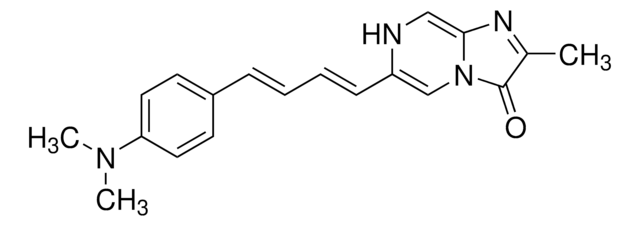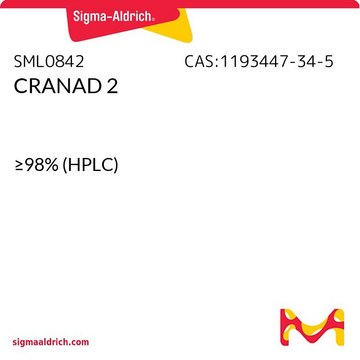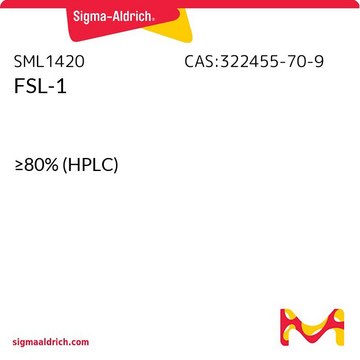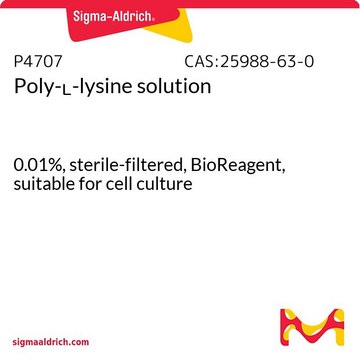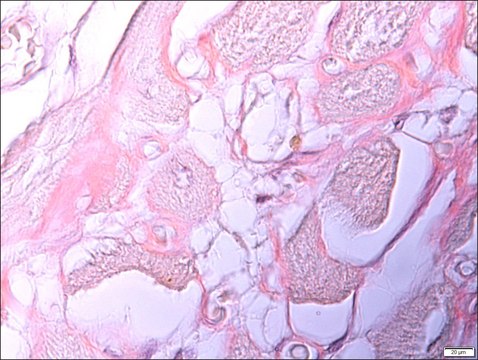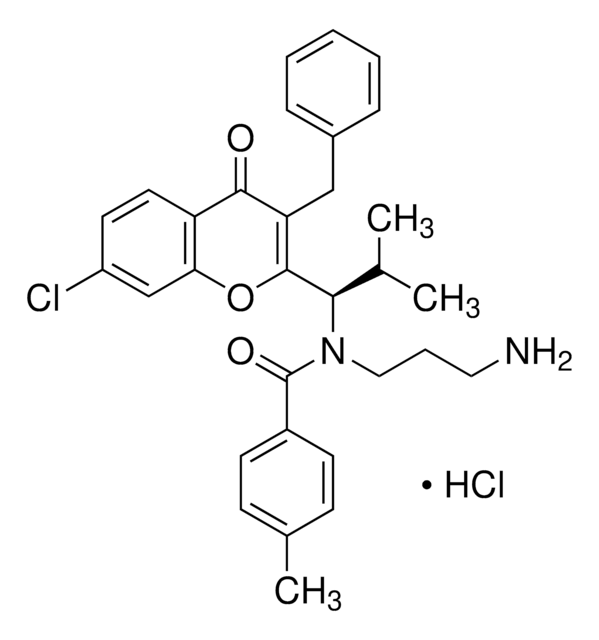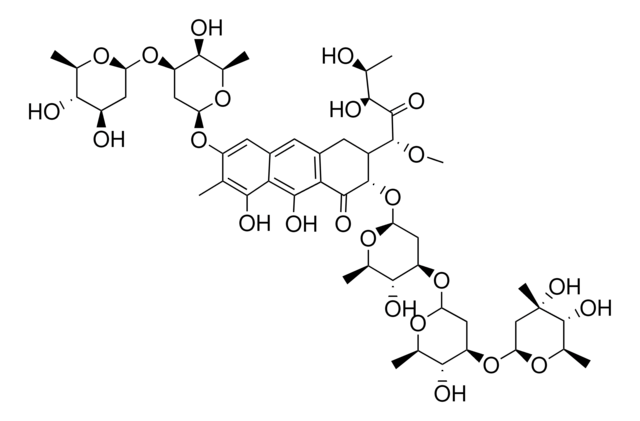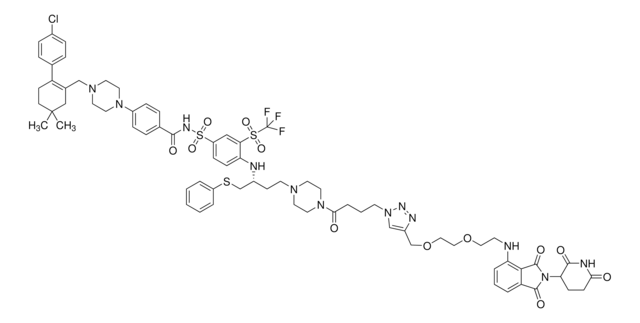推荐产品
质量水平
方案
≥98% (HPLC)
表单
powder
储存条件
desiccated
颜色
gray to black
溶解性
DMSO: 2 mg/mL, clear (warmed)
储存温度
2-8°C
SMILES字符串
FB(O1)(F)O=C(/C=C/C2=CN=C(N(CC)CC)C=C2)C=C1/C=C/C3=CC=C(N(CC)CC)N=C3
生化/生理作用
CRANAD-3, a curcumin analog, is a brain barrier penetrant smart NIRF (near-infrared) probe for both soluble and insoluble Aβ (amyloid beta) species in vivo. CRANAD-3 could be used to monitor the decrease in Aβs after drug treatment in transgenic AD (APP/PS1) mice. CRANAD-3 is suitable for in vivo dually-amplify signal via chemiluminescence resonance energy transfer (DAS-CRET) with ADLumin-1 a brain blood barrier penetrant smart chemiluminescence probe for Aβs
brain barrier penetrant smart NIRF probe for both soluble and insoluble Aβ (amyloid beta) species in vivo
储存分类代码
11 - Combustible Solids
WGK
WGK 3
闪点(°F)
Not applicable
闪点(°C)
Not applicable
历史批次信息供参考:
Xueli Zhang et al.
Proceedings of the National Academy of Sciences of the United States of America, 112(31), 9734-9739 (2015-07-23)
Near-infrared fluorescence (NIRF) molecular imaging has been widely applied to monitoring therapy of cancer and other diseases in preclinical studies; however, this technology has not been applied successfully to monitoring therapy for Alzheimer's disease (AD). Although several NIRF probes for
Congping Chen et al.
ACS chemical neuroscience, 9(12), 3128-3136 (2018-08-02)
Abnormal deposition of brain amyloid is a major hallmark of Alzheimer's disease (AD). The toxic extracellular amyloid plaques originating from the aberrant aggregation of beta-amyloid (Aβ) protein are considered to be the major cause of clinical deficits such as memory
Jing Yang et al.
Nature communications, 11(1), 4052-4052 (2020-08-15)
Turn-on fluorescence imaging is routinely studied; however, turn-on chemiluminescence has been rarely explored for in vivo imaging. Herein, we report the design and validation of chemiluminescence probe ADLumin-1 as a turn-on probe for amyloid beta (Aβ) species. Two-photon imaging indicates
我们的科学家团队拥有各种研究领域经验,包括生命科学、材料科学、化学合成、色谱、分析及许多其他领域.
联系技术服务部门